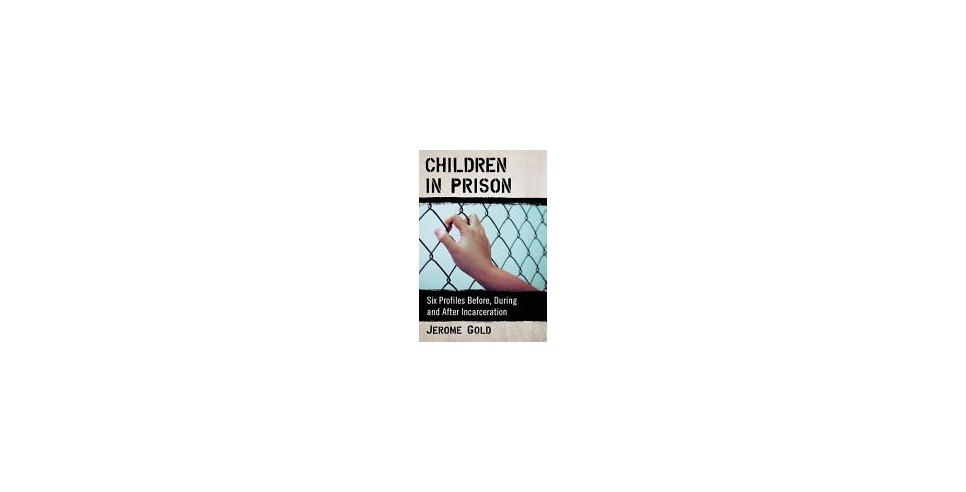
BOOK REVIEW
Children in Prison
Six Profiles Before, During and After Incarceration
by Jerome Gold
McFarland & Company, Inc., Publishers (2019)
pp 206
Jerome Gold’s earlier book, Paranoia and Heartbreak: Fifteen Years in a Juvenile Facility (New York: Seven Stories Press, 2009), captures his experience of working with juvenile offenders. Ten years later, his book Children in Prison offers greater context, shedding light on the children whose lives have been stunted, short circuited, and hardwired to fail.
Gold worked as a rehabilitation counselor for fifteen years at Ash Meadow, a juvenile prison in Washington State. His last seven years were spent working with children incarcerated in maximum security housing, Wolf Cottage.
These kids have done terrible things to land in prison. Most had committed felonies: rape, beatings, murder, grand theft, fraud. Gold’s work with the kids was far from easy. “Wolf [Cottage] could be violent. Kids rarely assaulted staff, but some of them went after one another, and staff had to be alert.” They did terrible things to each other and themselves. Suicide attempts were more often the norm than not.
Gold puts a name and a face on the children he has worked with. He grants child prisoners dignity as human beings, no longer just a number issued by the Department of Corrections. Many of the kids sent to Wolf Cottage had never known a life without fear and violence. There are clear and well grounded reasons why these kids do the things they do. Kids who committed serious offenses… “All had attached themselves to older people, either adults or older kids, who later, directly or indirectly, led them to trouble.”
The in-depth stories, albeit case studies, of six kids reveals their struggles to survive. They are all survivors: rape, incest, violence, emotional abuse, drug abuse, and abandonment. Most are from single parent families. Several have fathers serving time in prison. All have anger issues, some explosive. All have one thing in common: They have endured significant trauma.
As their lives evolve from being incarcerated and beyond, moving to minimum security housing, or being released, returning to the “outside,” they continue to be embroiled in trauma. It’s hard to make a break from the shackles of their past. These kids haven’t been hardwired to feel good about doing the good or right thing for themselves. It’s easier to survive by doing the wrong thing that feels like the normal thing to do. Reliving trauma, seeking out new trauma, constantly being reinjured is the default position. These six stories show how difficult it is to break the cycle of trauma.
The story of Norah Jones shows how the brutality of childhood trauma is exacerbated by the cruelty and injustice of the penal system. Norah Jones, from a broken family and a broken foster family, got six years for assaulting her foster mother, Geraldine. The other girl involved in the assault, who testified against Norah, was only sentenced to a few months. Norah had commited her crime in a county whose judges were known for doling out harsh sentences to juveniles.
Later when Norah was due to be released from maximum security, her transfer was stonewalled by an administrator for no real reason. Aside from Norah, no other resident had been kept in maximum security for such a long period. Even kids incarcerated for first degree murder had been transferred after three months. The chief psychiatrist would not intervene for political underpinnings that cannot be fathomed; the dysfunction exhibited among staff members is astonishing, incomprehensible and eye opening.
At any given time, between two and three million people, adults and children, are in prison. Not all of us who run afoul of the law end up in prison. Read the news on any given day to see how the wealthy and powerful always seem to get away with murder, metaphorically speaking and for real.
Crime is a natural outgrowth of children who have been stunted by the social and economic landscape they are born into. Youth who receive the harshest penalties in the criminal justice system are disproportionately youth of color, and those most in need of assistance from the state are instead punished by the state. These individuals tend to be raised in poorer neighborhoods and have gotten less education. Many have mental disabilities. Many were abused physically, sexually and emotionally, often by a parent or relative. Abandoned by their families, schools and communities, they have been set up to fail from the onset.
Kids who’ve committed brutal crimes are scary people. Society easily writes off kids who commit crime, especially heinous crime, as bad seeds. The natural response is to Lock them up. Protect society from harm. But it’s not that simple. There isn’t a weight of evidence suggesting that bad kids are just born that way. And when you’re a rehabilitation counselor as was Gold, the goal is, as always, to turnaround a kid who seemed hopelessly beyond redemption. By telling their stories, Gold gives a voice to children who yearn to be heard.








